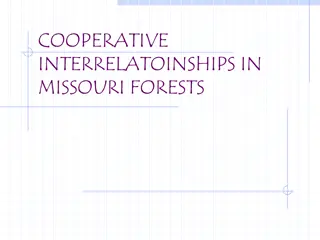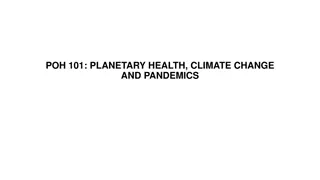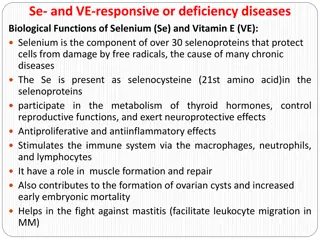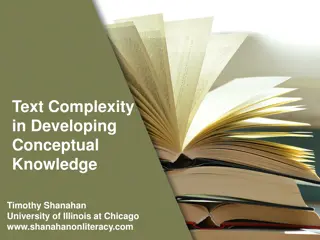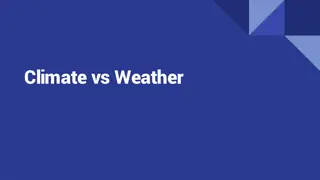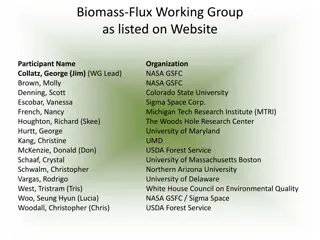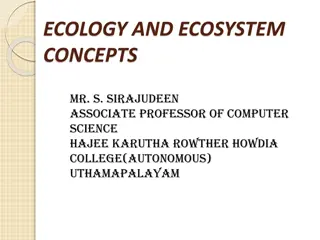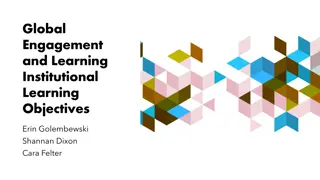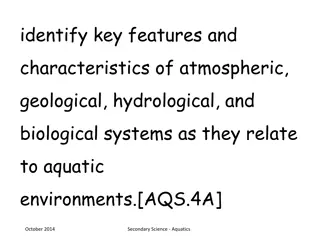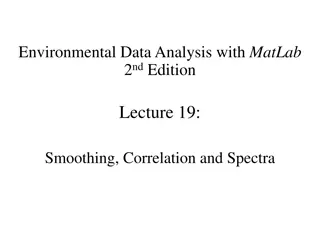Workshop on STI Policy for SDGs and Gender Equality
Approaches to STI policy-making in the context of Sustainable Development Goals (SDGs), with an emphasis on open science and gender equality. It covers the importance of STI in achieving SDGs, interrelationships between goals, building a robust STI system, and the STI policy cycle. Key elements incl
3 views • 15 slides
Understanding the Relationship Between Mental Health and Diabetes: Insights for Educators
Exploring the link between mental health issues and diabetes, this presentation by Dr. Mary de Groot discusses the implications for diabetes educators. It delves into the prevalence of mental health conditions in people with diabetes, screening, treatment options, and interrelationships between diab
5 views • 45 slides
Understanding the Case Study Method: In-depth Qualitative Analysis
The case study method is a popular form of qualitative analysis involving intensive observation of a social unit. It focuses on detailed analysis of a limited number of events or conditions to understand complex interrelationships. Characteristics include intensive study of a single unit, qualitativ
1 views • 8 slides
Exploring Symbiotic Relationships in Missouri Forest Ecosystems
Delve into the intricate web of cooperative interrelationships within Missouri forests, where diverse communities coexist in a delicate balance. Discover the concept of ecosystems, from deserts to lakes, and learn about symbiosis through examples of parasitism and commensalism. Explore the fascinati
0 views • 18 slides
Understanding OSI Model and TCP/IP Protocol Suite
Explore the concept of layering in data communication, comparing the OSI model and TCP/IP protocol suite. Learn about protocol layers, protocol hierarchies, and the functionality of each layer in these models. Discover the interrelationships between layers and the evolution from OSI to TCP/IP.
5 views • 57 slides
Significance of Models in Agricultural Geography
Models play a crucial role in various disciplines, including agricultural geography, by offering a simplified and hypothetical representation of complex phenomena. When used correctly, models help in understanding reality and empirical investigations, but misuse can lead to dangerous outcomes. Longm
0 views • 8 slides
Understanding Planetary Health, Climate Change, and Pandemics
This educational content delves into the concepts and principles of planetary health and climate change, exploring the interrelationships between ecosystems, animals, and human health. It highlights the far-reaching effects of human and animal interactions on the environment, emphasizing practical i
0 views • 20 slides
Impact of Correlation on Human Reliability Analysis
Understanding the impact of correlation between Performance Shaping Factors (PSFs) on their multipliers in the context of Human Reliability Analysis (HRA), particularly focusing on the SPAR-H method. The correlation among PSFs, such as stress, complexity, and training, is evaluated to determine how
1 views • 25 slides
Understanding the Roles of Selenium (Se) and Vitamin E (VE) in Health
Selenium and Vitamin E play crucial roles in protecting cells, promoting immune function, and maintaining reproductive health. Selenium is a key component of selenoproteins, while Vitamin E acts as an antioxidant. Together, they help combat oxidative damage, support thyroid function, and enhance cel
0 views • 11 slides
The Role of Text Complexity in Developing Conceptual Knowledge
Conceptual learning involves organizing new information into mental structures, focusing on big ideas and themes. While text complexity is often seen as a barrier to learning, it is essential for promoting high-level academic learning. Complex ideas require complex text that explains extensive infor
0 views • 74 slides
Understanding Climate vs. Weather: Key Differences and Interrelationships
Learn about the distinctions between climate and weather, including their definitions, variables, and how they relate to air masses and geographical factors. Explore the impact of proximity to the ocean, orographic effects, seasonal temperature differences, convection currents, and the Coriolis Effe
0 views • 19 slides
Biomass-Flux Working Group Overview
The Biomass-Flux Working Group, a collaboration involving various organizations like NASA and universities, aims to integrate land-atmosphere carbon fluxes and biomass changes to enhance estimations and understanding. By identifying overlapping projects, encouraging cross-comparisons, and reconcilin
0 views • 10 slides
Ecology and Ecosystem Concepts: Understanding Interrelationships in Nature
Ecology explores the interconnections between living organisms and their environment, dating back to zoologist Geoffroy St. Hilaire's early proposal in 1859. The term "ecology" originates from the Greek words for house and discourse, emphasizing the study of organisms within their habitat. Ecosystem
0 views • 36 slides
The Importance and Functions of Scenery in Theatre Productions
Scenery in theater serves vital roles such as providing a stage for actors, setting the scene, revealing interrelationships, indicating production style, and following staging conventions. It helps create mood, atmosphere, and aids in focusing the audience's attention on the performance. Effective d
0 views • 26 slides
Global Engagement and Learning Institutional Objectives Overview
This content introduces the institutional learning objectives of a global engagement and learning institution, focusing on graduates' exposure to interrelationships among self, local, and global communities, reflection of self-perspective and cultural diversity awareness, integration of world perspe
0 views • 9 slides
Understanding Aquatic Environments: Systems and Interactions
Explore the key features and characteristics of atmospheric, geological, hydrological, and biological systems in relation to aquatic environments. Apply systems thinking to analyze positive and negative feedback cycles. Utilize technology to collect and evaluate global environmental data. Evaluate d
0 views • 28 slides
Understanding Smoothing, Correlation, and Spectra in Environmental Data Analysis
Explore the interrelationships between smoothing, correlation, and power spectral density in environmental data analysis through topics like autocorrelation, cross-correlation, Fourier series, and more. Learn how to apply these concepts using MatLab for effective data analysis.
0 views • 81 slides



